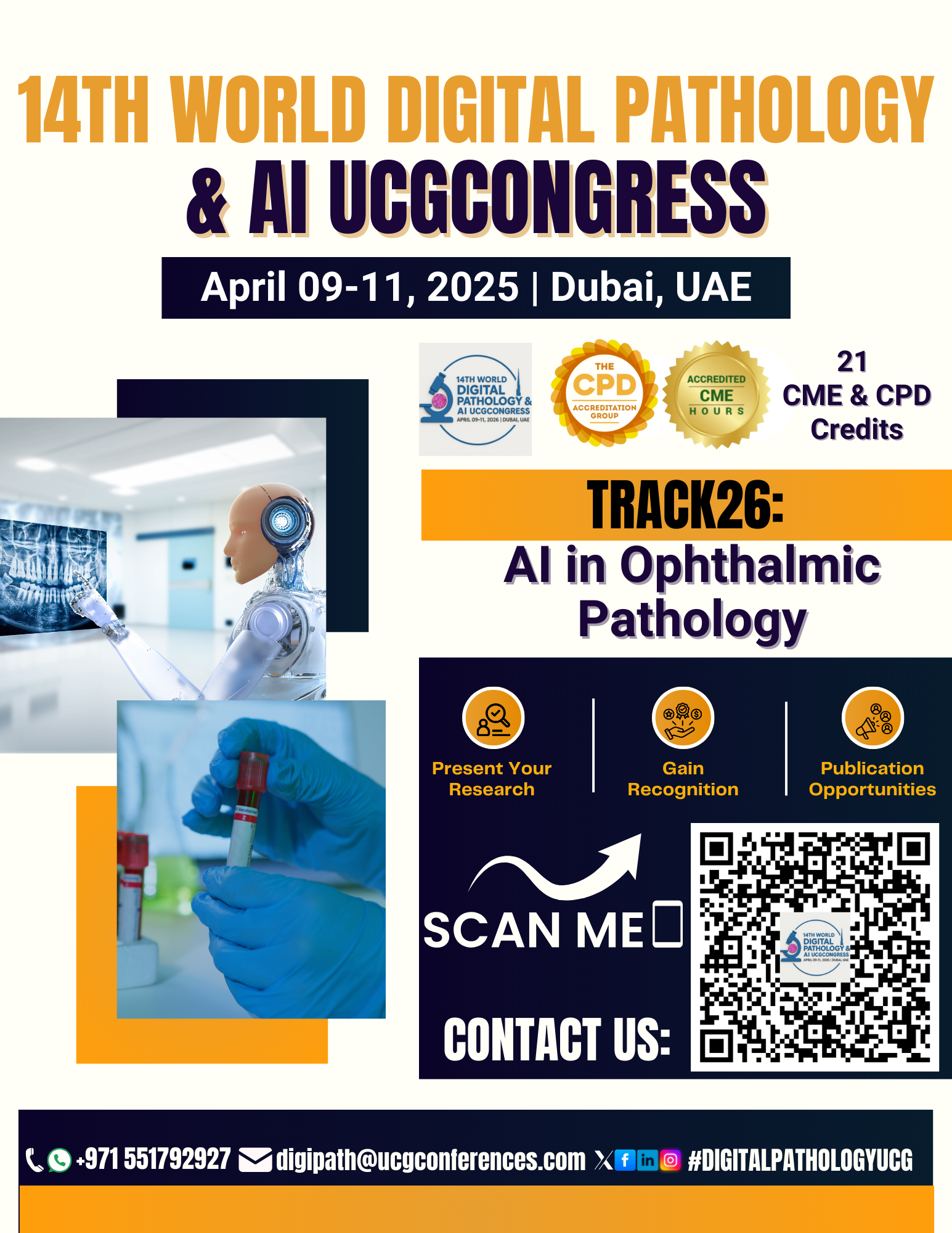



Sub track:-
Enhanced Image Quality Quantitative Analysis, Faster Turnaround Times,...

Sub track:-
Integration of Imaging Modalities, Advanced Image...

Track Overview:
Artificial Intelligence (AI) is revolutionizing
ophthalmic pathology by enhancing diagnostic accuracy, automating image
analysis, and providing valuable insights for personalized treatment
strategies. This track will explore the applications of AI in ophthalmic
pathology, particularly in the detection, classification, and monitoring of
ocular diseases such as glaucoma, diabetic retinopathy, age-related macular
degeneration (AMD), and ocular tumors. Attendees will gain insights into how
AI-driven tools are improving diagnostic workflows and supporting clinicians in
delivering more accurate and timely care to patients with eye diseases.
Key Topics:
Introduction to AI in Ophthalmic Pathology:
Understanding the basics of AI technologies and their role in ophthalmic
pathology, including machine learning algorithms and deep learning networks.
AI for Early Detection of Ocular Diseases: The role
of AI in identifying early signs of common ocular diseases like diabetic
retinopathy, glaucoma, and macular degeneration using digital pathology and
imaging techniques.
Automated Image Analysis in Ophthalmic Pathology:
How AI is used to analyze pathology slides and ophthalmic images, such as
retinal scans, to detect abnormalities and assist in diagnosis.
AI for Tumor Detection and Classification: AI
applications in the detection and classification of ocular tumors, including
melanoma and other eye cancers, enhancing diagnostic accuracy and treatment
planning.
AI in Monitoring Disease Progression: How AI tools
can be used to monitor disease progression over time, assess the effectiveness
of treatments, and predict future outcomes for patients with ocular diseases.
Integrating AI with Clinical Decision Support:
Exploring how AI-driven insights from ophthalmic pathology can be integrated
into clinical decision-making to personalize treatment plans for patients.
Challenges and Future Directions of AI in
Ophthalmic Pathology: Addressing challenges in the adoption of AI in ophthalmic
pathology, including data quality, regulatory issues, and the need for
standardized protocols, while discussing future advancements and innovations.
Learning Objectives:
Understand the applications of AI in ophthalmic
pathology and its impact on diagnosing and managing ocular diseases.
Learn how AI-driven image analysis can aid in the
early detection and classification of retinal diseases, glaucoma, and ocular
tumors.
Explore how AI can be used to monitor disease
progression and treatment outcomes, improving patient care in ophthalmology.
Gain insights into the integration of AI with
clinical workflows and decision support systems in ophthalmic pathology.
Discuss the challenges and future potential of AI
in ophthalmic pathology, including data integration, regulatory hurdles, and
innovations in technology.
Target Audience:
Ophthalmologists, pathologists, and clinicians
working in the field of ophthalmic pathology.
AI and machine learning professionals developing
algorithms for image analysis and diagnostic tools in ophthalmology.
Researchers in ophthalmology and pathology
exploring the integration of AI in ocular disease detection and treatment.
Medical professionals involved in the diagnosis and
treatment of ocular diseases, including glaucoma, AMD, and diabetic
retinopathy.
Healthcare administrators and policymakers
interested in the implementation and regulation of AI technologies in clinical
settings.
Speakers/Presenters:
Experts in ophthalmic pathology and AI applications
in the diagnosis and treatment of eye diseases.
Ophthalmologists and pathologists using AI in their
clinical practice to enhance diagnostic accuracy and treatment planning.
AI researchers and developers specializing in
machine learning algorithms for ophthalmic image analysis.
Clinicians and healthcare professionals discussing
the integration of AI-driven tools into ophthalmology practices.
Regulatory and policy experts addressing the
challenges of implementing AI technologies in clinical and diagnostic
workflows.
Conclusion:
This track will explore how AI is enhancing ophthalmic pathology, improving diagnostic workflows, and enabling personalized treatment for ocular diseases. Attendees will learn about the role of AI in early disease detection, automated image analysis, tumor classification, and disease monitoring. The track will also address the challenges in implementing AI and discuss the future possibilities for AI innovations in ophthalmic pathology.